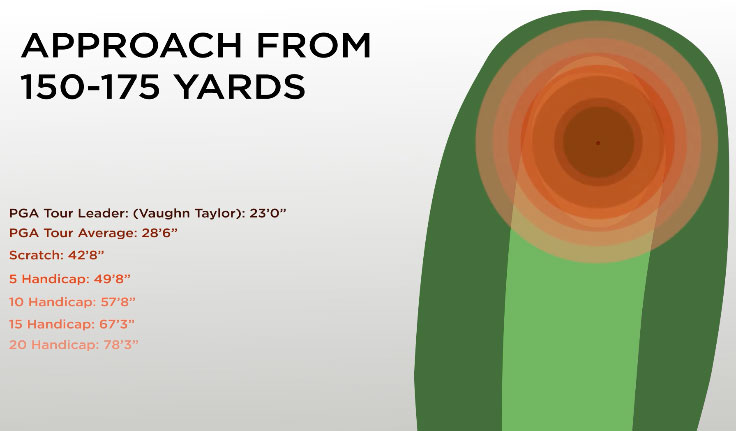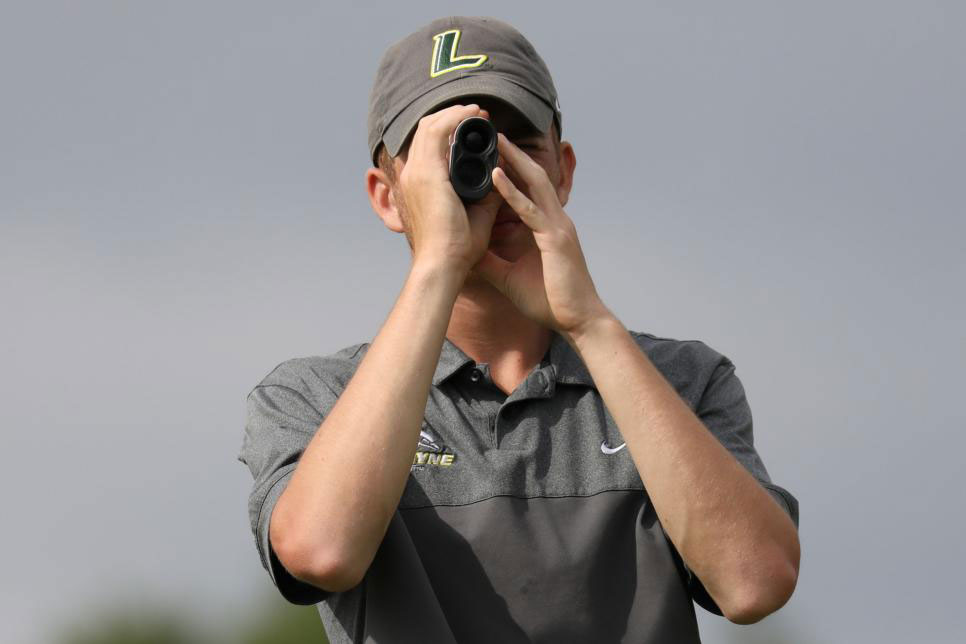JD Cuban
The importance of having a pre-shot routine is often discussed, but there is another process that elite golfers go through before each approach shot. If you get to your ball, laser the distance, pull a club and step in, you’re missing an essential step to dialling in your iron play.
Before you start your pre-shot routine, you need to go through a pre-shot checklist.
Iron play is one of the biggest distinguishing factors between golfers, especially good amateurs and pros. Look at the graphic below and you’ll notice a steep increase in proximity to the hole as a player’s handicap increases.

Golf Digest
To improve your iron play, strive to improve your distance control. To do that, you need to get specific with your numbers. Often, amateurs will simply get a number to the pin, grab their club for that distance and hit the shot. If the shot is playing a little uphill or into the wind, they might take one more club. If there is trouble long, amateurs might try and “take some off” and swing a little easier.
The problem with this process is it lacks specificity. What happens when, for example, you’re playing a downhill shot that is into the wind, and there is trouble long. The downhill will make the ball travel farther, but the wind will hold it up. And don’t forget that you want to stay below the hole. How can you properly account for these factors and hit a committed shot with all that information floating around?
Instead, use a pre-shot checklist to arrive at one specific number that you are trying to carry your ball. On a calm day, a flat lie and no trouble around the green, that number might be the exact number to the flag. More often, however, the distance you want to carry the ball and the total distance will be different, often drastically so. Here’s how you should break it down.

Matt Marriott
1. How far to the flag?
Determine how far away you are from the hole. This is your starting number. As an example, let’s say you’re 150 yards from the pin.
2. Where do I want to land it?
This is where you account for how firm the greens are and where the trouble is. If the pin is tucked in the back of the green and there is trouble long, take five yards off. Your new number is 145. Also consider how far your ball will bounce when it hits the green. If the greens are firm, take off another five yards, bringing your effective carry number down to 140.
3. Is it uphill or downhill?
For this example, let’s say you’re playing to a green set above you. You estimate it to be playing five yards uphill, so your new number is 145.
4. Evaluate the wind
Adjust your carry number based on how hard the wind is blowing. If there is a lot of help or hurt, this could be as much as 10-20 yards. For our example, let’s say you’re playing slightly downwind. Adjust your number back to 140 for the five yards of helping breeze.
5. Read the lie
Finally, examine your lie. If you’re in the fairway, there likely won’t be much to add or subtract here, but if you’re in the rough, look for a flyer lie. Those happen when you have a decent lie, but there is grass between the ball and the club, which will cause the ball to have less spin and come out hot. Subtract five or 10 yards. If the ball is sitting well down, and you think it might come out dead, add 10 yards. In our case, we’re in the fairway, so we’re sticking with our 140-yard number.
This may seem like a lot, but once you make it a habit, you’ll work through these factors in less than 30 seconds. Consider our example — we have a 150-yard shot, but we’re only trying to land the ball 140 yards. This number takes into account all the factors above. When you step into the ball, forget the number to the flag and focus only on your adjusted carry number.









